The Economics and Statistics Division maintains archives of previous publications for accountability purposes, but makes no updates to keep these documents current with the latest data revisions from Statistics Canada. As a result, information in older documents may not be accurate. Please exercise caution when referring to older documents. For the latest information and historical data, please contact the individual listed to the right.
<--- Return to Archive
For additional information relating to this article, please contact:
August 30, 2019CANADIAN ECONOMIC ACCOUNTS Q2 2019 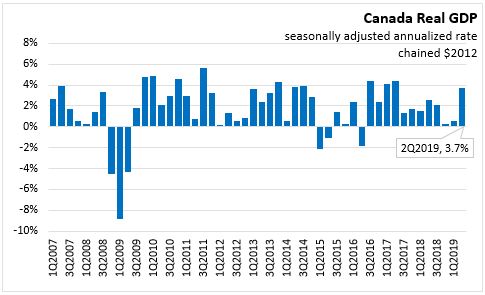
Real gross domestic product (GDP) grew 3.7 per cent (all figures seasonally adjusted at annual rates) in Canada in the second quarter, following growth of 0.5 per cent in the first quarter and 0.3 per cent in the fourth quarter of 2018. Final domestic demand declined 0.7 per cent during the quarter.
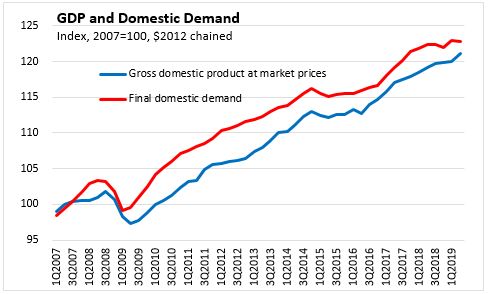
Growth in household final consumption rose 0.5 per cent in Q2 2019 following growth of 2.9 per cent in the first quarter. Outlays on durable goods were down 1.3 per cent, largely due to lower vehicle purchases. Outlays for semi-durable goods rose 1.4 per cent while spending for non-durables decreased 0.5 per cent on the quarter. Outlays for services increased 1.3 per cent.
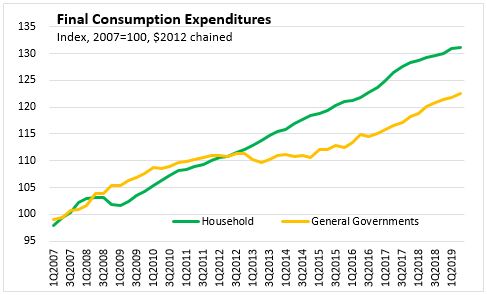
Non-residential investment in buildings and engineering structures declined 1.8 per cent and have declined for six consecutive quarters. Machinery and equipment investment decreased 32.4 per cent after a 42.9 per cent increase in the previous quarter, largely due to a rise and fall in aircraft and other transportation equipment investments over the first six months of 2019. Computer and related equipment investments increased in Q2, following a decline in the first quarter. Intellectual property products rose on growth in mineral exploration and evaluation, software and research and development.
Residential investment increased 5.5 per cent after five consecutive quarterly declines. Growth was broad-based, with increases in multi-dwelling investments and conversions leading growth in new home construction, higher resale activities boosting growth in ownership transfer costs, and increased renovation activities.
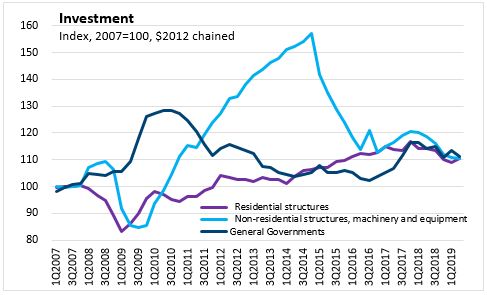
A 13.4 per cent increase in exports led GDP growth in Q2 2019, with notable growth in energy products, farm and fishing products, non-metallic minerals, aircraft, related engines and parts, and travel services. Exports of pulp and paper dropped, marking the fourth consecutive quarterly decline. Import volumes decreased in Q2 on declines in aircraft and associated engines and parts, pharmaceuticals and medicinal products, and communication, audio and video equipment. Imports of services fell, largely on lower imports of transportation services.
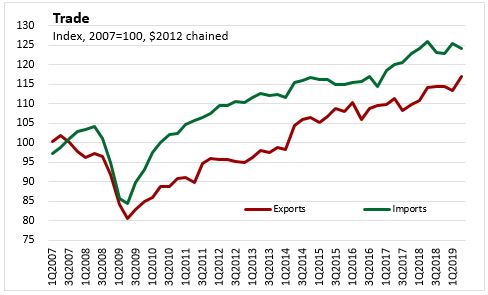
Inventories accumulation declined from $19.5 billion in Q1 to $14.0 billion in Q2.
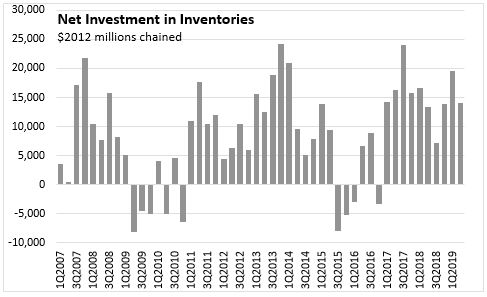
The overall price level of goods and services produced in Canada (the GDP implicit price index) rose 4.5 per cent in the second quarter after increasing 4.9 per cent in Q1 2019. Nominal GDP rose 8.3 per cent in the quarter. On an annualized basis, compensation of employees increased 6.9 per cent and corporate net operating surplus rose 28.7 per cent. The household saving rate increased to 1.7 in the second quarter of 2019.
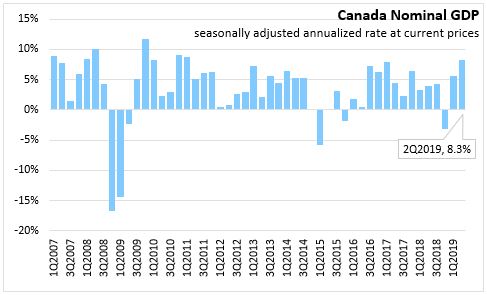
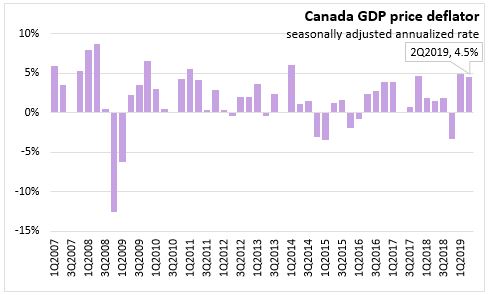
Source: Statistics Canada Tables 36-10-0103-01 and 36-10-0104-01
<--- Return to Archive